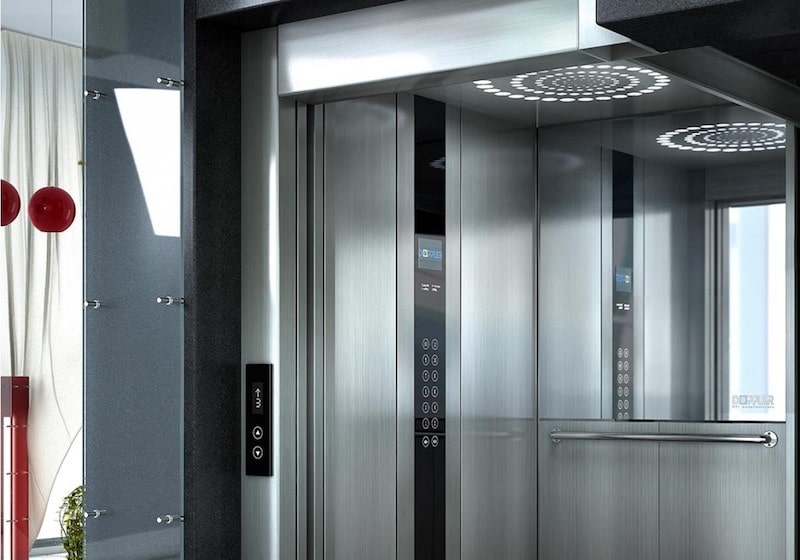We Maintain Lifts with Accuracy: Ensuring Safety and Efficiency
Wiki Article
Exploring the Globe of Lifts: Common Problems Faced by Various Lift Mechanisms
As we navigate via the vertical transport systems of modern-day structures, elevators attract attention as a crucial part of our lives. Nevertheless, behind their seamless procedure exists a globe of intricate devices that can often experience difficulties. From hydraulic lifts to grip systems and machine-room-less styles, each lift kind comes with its set of usual issues. Recognizing these obstacles is essential for making certain the smooth functioning of these essential systems. Let's explore the intricacies that underlie the operation of elevators and the prospective concerns that can emerge, losing light on the complex web of lift devices.Hydraulic Lifts
Hydraulic lifts, frequently chosen for low-rise buildings, utilize fluid stress to regulate the motion of the elevator car (lift repair companies). This mechanism includes a hydraulic pump pressing oil into a cylinder, causing the lift to relocate in the wanted direction. While hydraulic elevators are understood for their peaceful and smooth operation, they do come with their own collection of typical concernsOne widespread trouble with hydraulic lifts is oil leakage. Additionally, problems with the control system, such as defective valves or a malfunctioning pump, can cause disturbances in the lift's movement.
Regular maintenance and punctual repair services are important to guarantee the smooth performance of hydraulic elevators. By dealing with these common issues proactively, building proprietors can reduce downtime and ensure the security and efficiency of their upright transportation system.
Traction Lifts
When considering upright transport systems in buildings, one more usual type other than hydraulic lifts is the traction elevator. Grip elevators run using a system of ropes and weights that move the lift cars and truck by clutching onto the hoist ropes. This system permits smoother and faster vertical transport compared to hydraulic systems.Among the usual problems faced by traction elevators is rope wear. The continuous activity of the ropes within the traction system can result in use and tear in time, potentially triggering the elevator to breakdown or end up being hazardous for usage. Routine examinations and maintenance of the ropes are important to ensure the elevator's appropriate performance and safety.
Another concern that traction lifts may run into is associated with the control system. Issues with the control system can lead to problems such as irregular movement, delays in action times, or also complete shutdowns. Normal testing and maintenance of the control system are critical to avoid such problems and make sure the lift's dependability.
Machine-Room-Less (MRL) Elevators

Among the crucial components of MRL lifts is the compact gearless grip device that is installed within the hoistway. This equipment effectively drives the lift cars and truck without the need for cumbersome devices located in conventional grip elevators. In addition, MRL elevators typically utilize a counterweight system to stabilize the vehicle, additional enhancing their power efficiency.
In spite of their benefits, lift repair near me MRL lifts may deal with obstacles connected to maintenance and fixing due to the restricted room for tools installation. Ease of access for servicing elements within the shaft can be restricted, calling for specialized training for service technicians. Correct maintenance schedules and routine assessments are critical to ensure the continued smooth operation of MRL elevators.
Overloading and Weight Limit Issues
Are elevators furnished to take care of excess weight lots successfully and securely? Straining and weight restriction concerns are critical concerns in elevator operations. Elevator manufacturers design lifts with specific weight capacities to ensure passenger safety and tools longevity. Exceeding these weight restrictions can bring about numerous troubles, consisting of mechanical failures, delays, and safety hazards.When elevators are strained, it puts excessive pressure on the electric motor, cable televisions, and other parts, potentially causing breakdowns or breakdowns. Safety and security systems such as sensing units and overload sensors remain in area to prevent lifts from moving if they detect excess weight. Additionally, going beyond weight limitations can lead to raised energy intake and deterioration on the lift system.
To reduce straining problems, constructing supervisors should plainly show weight limits in lifts and educate owners on the significance of sticking to these limitations - lift repair companies. Regular maintenance checks by certified specialists can additionally help make sure that lifts are operating within risk-free weight criteria. By attending to overloading and weight restriction issues proactively, structure proprietors can enhance elevator security and performance
Electrical System Failures
Going beyond weight restrictions in elevators can not just lead to mechanical problems but likewise potentially contribute to electrical system failures within the lift facilities. Electrical system failings are a critical concern in elevator procedure, as they can create unforeseen shutdowns, malfunctions, or also security risks.Routine maintenance and assessments are essential to recognize and deal with possible electrical concerns quickly, ensuring the efficient and secure operation of elevator systems. By sticking to weight limits and conducting regular electrical system checks, building proprietors can mitigate the danger of electric failures in elevators.
Final Thought

Hydraulic elevators, frequently chosen for low-rise structures, make use of fluid stress to control the motion of the lift cars and truck.When considering upright transportation systems in structures, an additional typical kind apart from hydraulic elevators is the traction lift. Traction lifts run utilizing a system of ropes and weights that move the lift vehicle by clutching onto the hoist ropes. Unlike traditional lifts that call for a separate maker room to house the devices, MRL lifts incorporate most of the elements within the shaft, eliminating the requirement for a committed device space.In verdict, elevators deal with usual issues such as hydraulic malfunctions, traction system failings, and electric system troubles.
Report this wiki page